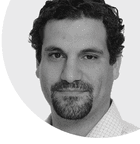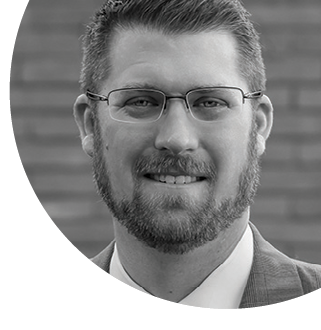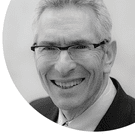


DEPARTMENTS
ETHICS
ROB AGNEW, MS, CIH, CSP, REM,
is an assistant professor in the Fire Protection and Safety Engineering Technology Program at Oklahoma State University in Stillwater, Okla. He can be reached at (405) 744-8772 or robert_j_agnew@hotmail.com
.
MARK KATCHEN, CIH, FAIHA,
is managing principal at Phylmar Group Inc. in Los Angeles, Calif. He can be reached at (310) 474-3937 or mkatchen@phylmar.com
.
JOSEPH ALI
is a research scholar at the Johns Hopkins Berman Institute of Bioethics. He can be reached at
(410) 614-5370 or jali@jhu.edu
.
From Principles to Practice
A Framework for International Industrial Hygiene Ethics
BY ROB AGNEW, MARK KATCHEN, AND JOSEPH ALI
Authors’ note: the eight-step framework discussed in this article was developed by Nancy Kass, Holly Taylor, and Joseph Ali of the Berman Institute of Bioethics at Johns Hopkins University, together with Anant Bhan, a researcher at Yenepoya University in Pune, India. Our next column will present another example in international IH ethics.
Here’s the situation: a U.S.-based company is producing vane-axial dingle arms in three countries—the U.K., Germany, and the U.S. The production process involves spray application of methylene chloride (Dichloromethane), and each country has a different exposure limit. Which limit, or limits, should the company adhere to in its facilities?
This hypothetical dilemma illustrates some of the ethical complexities of practicing industrial hygiene in an international setting. In this article, we offer an eight-step framework for ethical decision making in situations that transcend boundaries, cross cultures, and place ethical principles in tension with each other.
GOALS ROOTED IN PRINCIPLES
Effective industrial hygiene practice must consider professional standards (for example, the ABIH Code of Ethics), cultural norms, legal and regulatory requirements, and human rights. However, an international practice often compels consideration of universal ethical principles, including:- non-maleficence — avoiding harmful acts; minimizing unavoidable harms
- beneficence—maximizing potential benefits
- respect for individuals and communities—respecting local decision-making processes and legal frameworks; privacy/confidentiality
- justice—treating equals equally; supporting reduction of pre-existing injustices
Our fundamental goals should be rooted in these principles, while our more immediate goals focus on mitigating conditions that place stakeholders at risk (through improving use of personal protective equipment, for example). Industrial hygienists must also focus on program goals such as accurately documenting exposure monitoring data (for more information, see Nancy Kass’ paper “
An Ethics Framework for Public Health
").
The challenge for industrial hygiene professionals is determining whether a course of action will be effective in the given international setting. It’s often difficult to ensure that all parties share a mutual understanding and acceptance of principles, goals, and practices. In addition, we must address differences between individuals, cultures, institutions, and regulations, and we must consider whether an action risks further stigmatizing an already stigmatized work force. However we decide to proceed, our proposed course of action might need to be “locally adapted” in a way that maintains our ethical standards.
THE FRAMEWORK
Step 1:
Gather facts.
Methylene chloride has an OSHA Permissible Exposure Limit of 25 ppm, a U.K. Workplace Exposure Limit of 100 ppm, and a German MAK of 50 ppm. The ACGIH Threshold Limit Value is 50 ppm. The company wishes to act ethically and would not violate the law in any country. Therefore, the baseline of compliance is the local exposure limit where each facility operates.Step 2:
Review the standards for ethical industrial hygiene practice.
The standards that apply are the ABIH Code of Ethics (PDF
).Step 3: Articulate the ethical concern.
If the company merely complies with the local law, it will be treating employees differently with respect to disease risk, which presents an ethical dilemma involving justice and the right to a healthy workplace.Step 4: Determine the ethics principle involved.
Compliance with the law is a baseline of ethical practice as stated in standard IA1 of the ABIH Code of Ethics. But standard IIC1 clarifies that the law is not the only principle for ethical practice: “Follow appropriate health and safety procedures . . . to protect clients, employers, employees and the public from conditions where injury and damage are reasonably foreseeable.” In addition, the Code’s preamble instructs us to act with fairness. Also relevant is standard IIA6, which mandates truthful and accurate estimates concerning costs.Step 5: Determine whether the principles are in tension with each other.
This dilemma provides some nuances to consider. First, complying with the law is an ethical act. Requesting the U.K. factory to reduce its exposure limits by a factor of four would likely increase costs. If the local law is satisfied, should costs be considered as part of the cost/benefit equation?
Yes and no. Costs should not be used as an excuse to gamble with human health. If a task cannot be done safely, should that task be completed at all?
In addition to the business case, we need to consider the relevant science. A peer-reviewed scientific study published in the journal
Toxicology and Applied Pharmacology
showed that cancer risk estimates using rodent studies “greatly overestimate the risk in humans” with respect to methylene chloride metabolism because rodents and humans have differing metabolic pathways. Therefore, the lower U.S. limit may be overprotective and excessively costly when implemented in the other countries’ factories.
Scientific inquiry into the accuracy of exposure limits and TLVs certainly has generated its fair share of controversy, but the Andersen study was completed in 1985 and available to the OSHA committee that authored the standard for methylene chloride.
Step 6: Determine options, including analysis of pros and cons. Given the differences in exposure limits, the company has three options.
The first option is to comply with each country’s exposure limit. This approach allows each facility’s employees to use the standard most familiar to them. It also minimizes costs since it requires few, if any, changes to existing operations. However, this option potentially exposes U.K. workers to concentrations four times those of U.S. workers.
The second option is to comply with the non-regulatory exposure limit of 50 ppm. This option would attempt to treat all employees equally but would be insufficient to cover the U.S. legal obligation.
The third option is to comply with the lowest of the exposure limits set forth in the countries in which the company operates—in other words, to control exposures in each country to the U.S. PEL of 25 ppm. Doing so would ensure the highest level of protection for employees, but it would increase the cost of compliance in the U.K. and Germany.
Step 7: Solicit feedback, including local stakeholders.
Feedback from the U.K. and Germany indicates that the lower limit of 25 ppm is probably attainable. But stakeholders require assistance in securing budget and request a three-year implementation period to achieve compliance.Step 8: Decide on an approach.
Science, costs, and compliance with the law are important when considering the company’s and the industrial hygienist’s ethical obligations. But the issue here is not cost or science—it is people. Fair and ethical treatment for all requires application of the most restrictive regulation so that all employees have the same reduced risk of disease.
CROSSING BOUNDARIES
This example demonstrates the challenge of applying ethical standards across multiple boundaries. On its face, the precautionary principle is a logical ethical framework to help industrial hygienists with ethical decision making. But many situations require an in-depth ethical examination that considers stakeholders’ feedback and protects the public.
In the final analysis, industrial hygienists must make an effort to treat people equally and with fairness. The example in this article focuses on countries with well-developed safety regulations. What if the setting is a developing nation with no exposure limits? Clearly, mere compliance with the law in a country with outdated or nonexistent exposure limits is not consistent with the ABIH Code of Ethics. Professional practice mandates that we strive for fairness and ultimately apply an as-low-as-reasonably-achievable (ALARA) perspective in all scenarios.
thesynergist | TOC | NEWSWATCH | DEPARTMENTS | COMMUNITY

